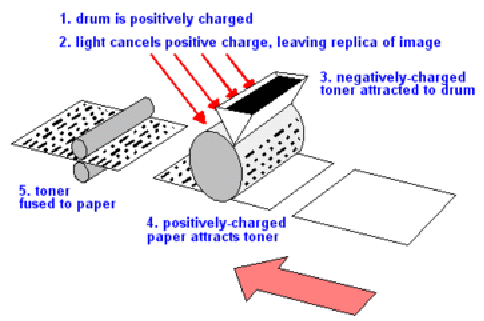Photocopiers make copies of pieces of paper on other pieces of paper. There are five steps in making a photocopy.
A rotating drum is given a positive charge. The surface of the drum is made of a specical photoconductive material.
The document to be compied is exposed to light. Reflected light is focused onto the drum. Where the drum is lit brightly the surface charge leaks away.Only the unlit parts stay positively charged.
Negatively charged powdered ink ink or toner is sprinkled onto the drum. The toner is attracted to the positively charged areas of the surface.
A blank piece of paper is charged positively and the drum is rolled over it. The negatively charged toner is attracted to the paper.
The paper now passed between heated rollers. The toner is melted and fused to the paper to make a permanent copy. Laser printers operate on similar principles.

